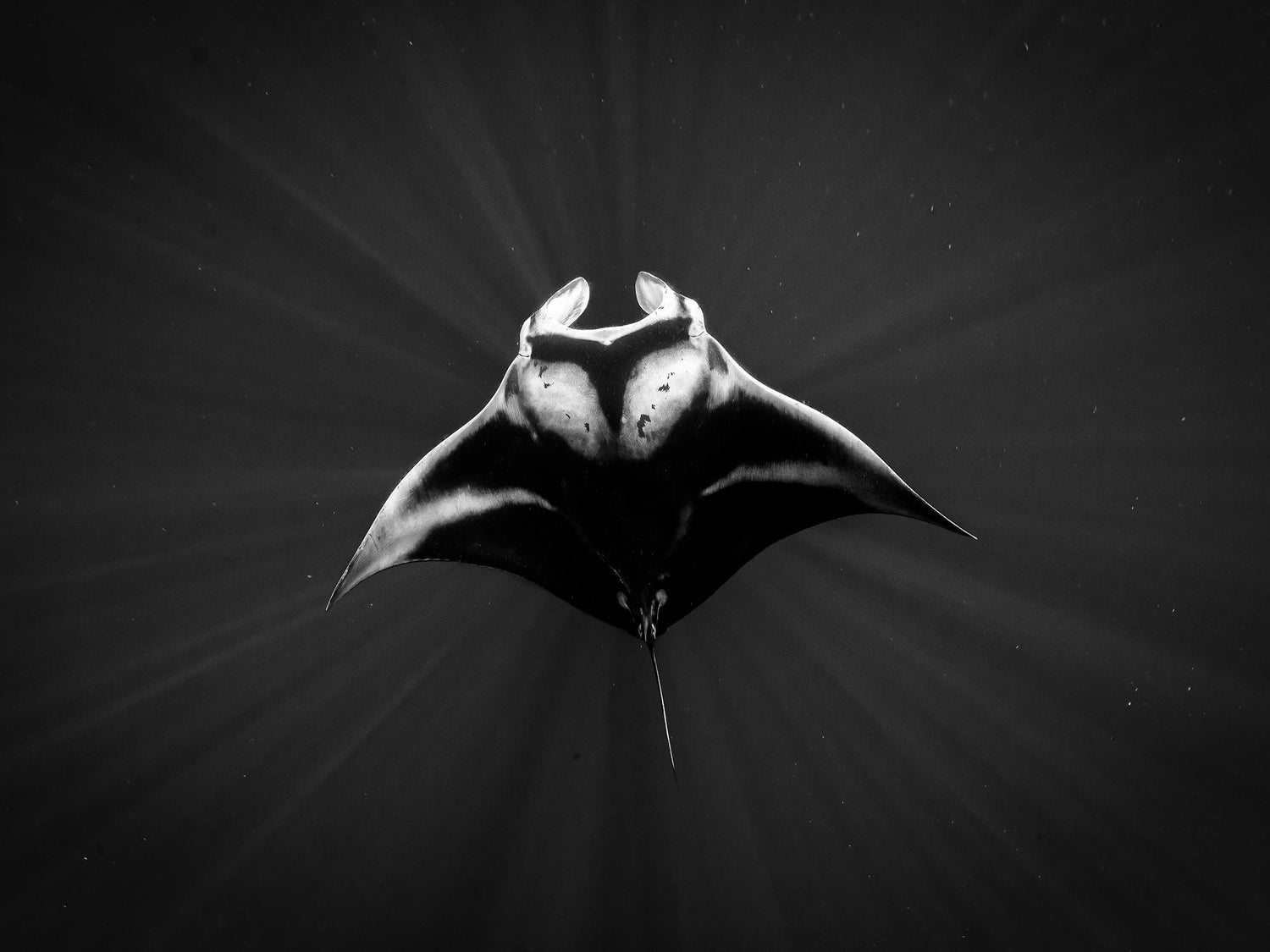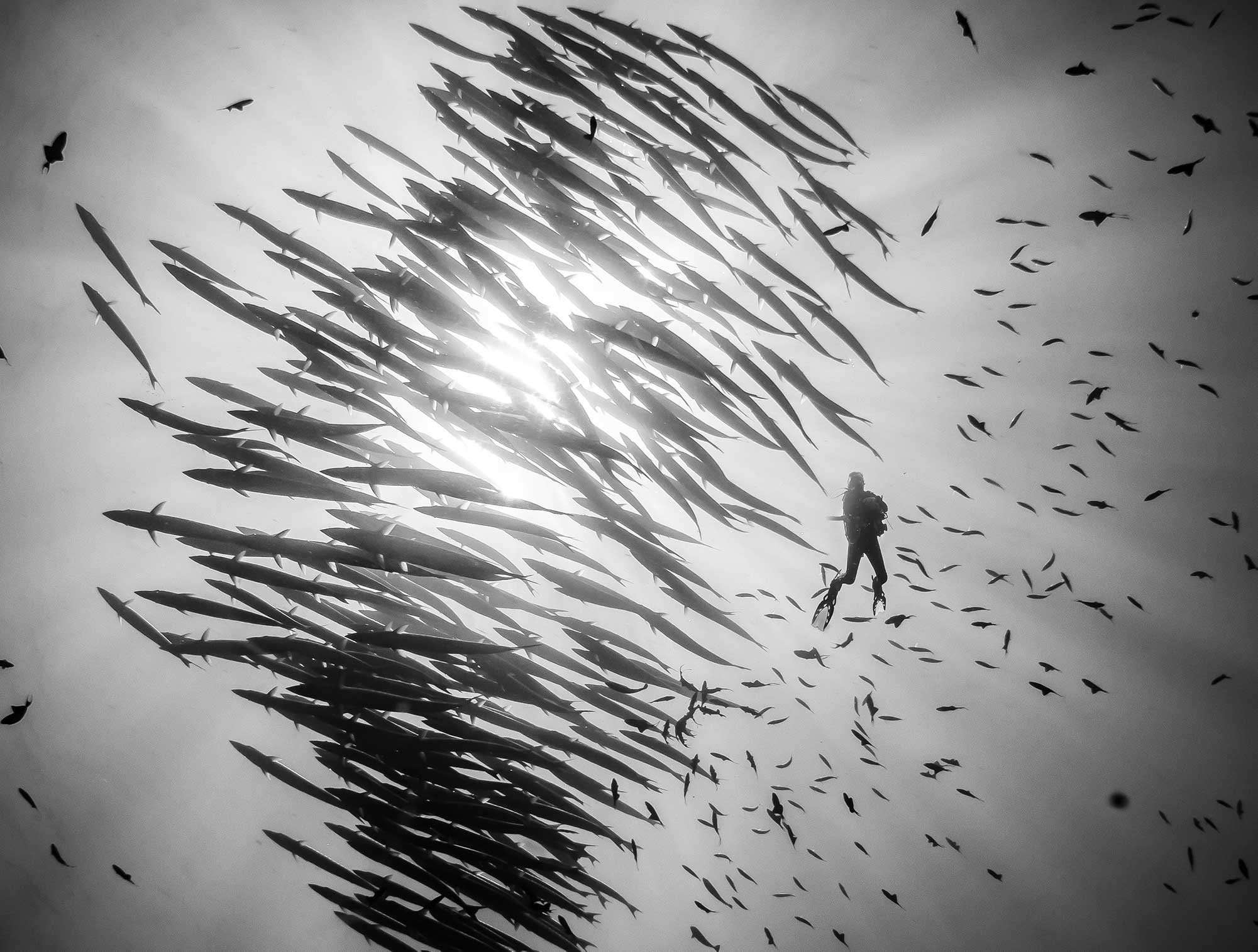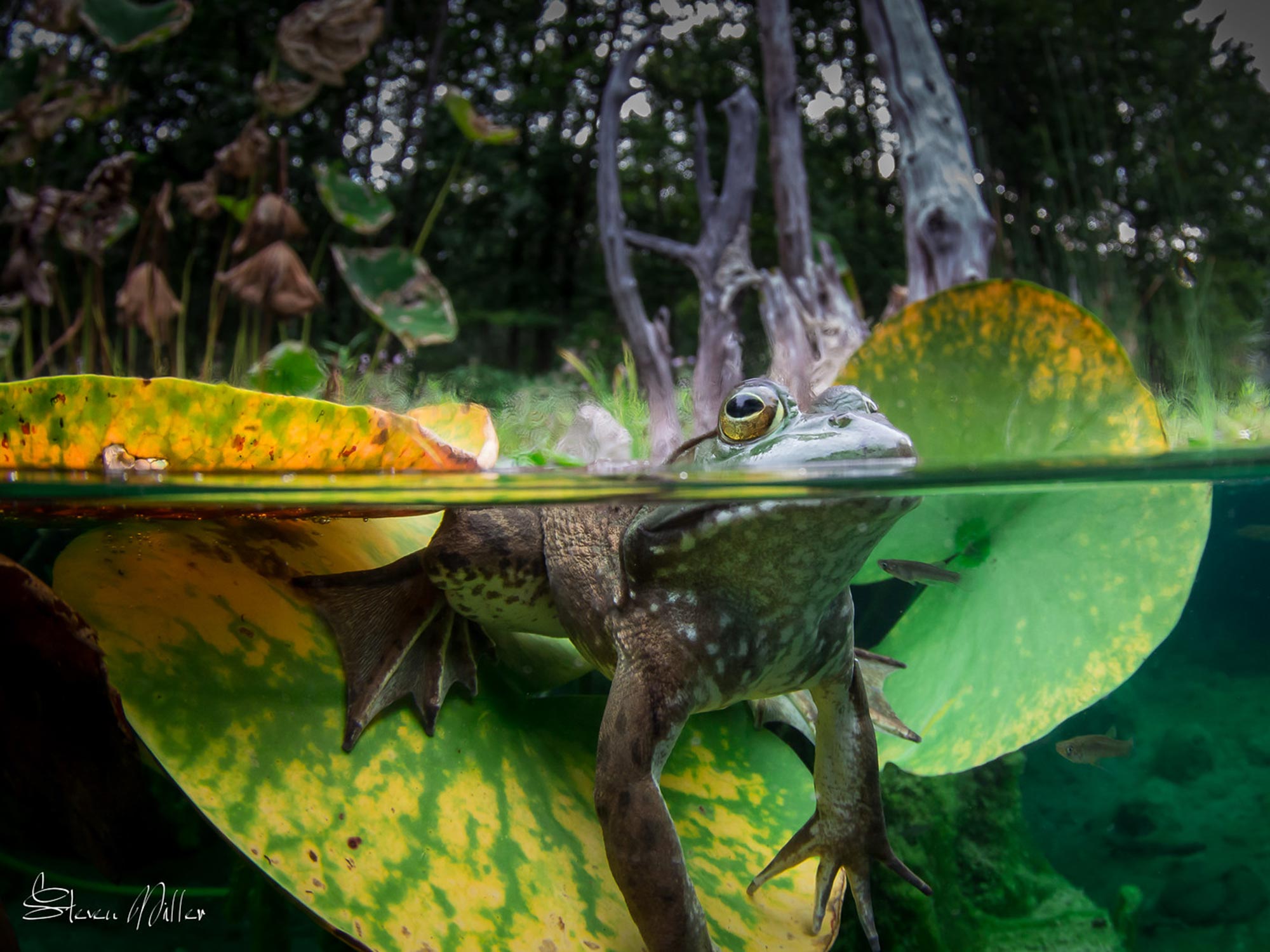Manta Rays are among the largest and smartest animals in the ocean. Their brain to body mass ratio is one of the highest of any living fish and they've even been shown to pass the mirror self-recognition test (MSR). Reaching sizes of up to 29 feet (8.8m), they're undoubtedly one of the more spectacular sea creatures to share a swim with. If you're lucky enough to encounter one of these gentle giants, use the following tips and techniques to make sure you're prepared to get the best photo possible.
Where
Chance sightings of Mantas happen in virtually every sea. Some of the most famous places to see them are on special Hawaiian night dives and off the Micronesian island of Yap. But they can be spotted off Florida, the Caribbean and off the Eastern coast of the US.

1/160 • f/11 • ISO 640 • Canon EOS 40D • 10-17mm at 11mm • At the edge of a current, a Manta Train can form when many individuals feed in an endless succession. Once you see the pattern you can wait for them to come back around. Use this time waiting to breathe, and check your settings by shooting frames in the direction you expect them to come from. © 2021 Steve Miller
DSLR + Mirrorless
Mode: Manual if using flash, Manual, Program or Shutter Priority option if shooting natural light.
ISO: 100-800 depending on where you find them, mantas can be in tropical or temperate waters, and what they eat can cloud the water and cut the light. If you are shooting at night with light arrays the ISO can be set as high as 10,000-20,000 as long as the light arrays aren't too close and large in the frame.
Shutter speed: 1/125th or faster to avoid motion blur. Mantas prefer a slow pace to swim but bursts of speed are one of their defenses, if they decide to leave you won't have a shot at them.
Aperture: f/8 to f/16
Lens: Super wide fisheye or rectilinear lenses are ideal if you expect to get close, a wide angle zoom is a good choice.

1/160 • f/22 • ISO 640 • Canon EOS 40D • 10-17mm at 10mm • With clear water and a bright sun, the surface chop will break the light into well-defined light rays. Faster shutter speeds and no flash will help define the rays. © 2021 Steve Miller
Point and Shoot
Mode: Manual if using flash and available. Shutter priority (TV) or Program option as well.
ISO: 200 or lowest for snorkeling in tropical water. Open up the lens for deeper or greener water.
Shutter speed: 1/250th or faster to stop motion.
Aperture: f/4 to f/18 depending on the brightness of the scene.
Lens: Native zoomed out to maximum width (24-28mm). Super wide conversion lenses will work well here.

1/160 • f/20 • ISO 640 • Canon EOS 40D • 10-17mm at 10mm • Tiny fish eggs that collect in the summer in Isla Mujeres, Mexico attract Mantas along with a famous Whale shark aggregation. When a Manta finds a concentration of food at the surface they will sometimes circle over and over in the same place. © 2021 Steve Miller
Technique
If you have a chance sighting of a Manta, you probably won't get close, and the strobe may not help much. Try shooting natural light, and put them in a scene. If there are Mantas aggregating for some reason (lights at night, or plankton blooms) and you expect multiple encounters, try to balance your lights to match the ambient exposure. This way you will have an image whether or not the strobes reach them. Their bellies can be very white so they will pick up some light from a good distance and are easy to overexpose.

1/160 • f/16 • ISO 640 • Canon EOS 40D • 10-17mm at 10mm • Mid-afternoon with bright sunshine makes natural light a great option for shooting Mantas. © 2021 Steve Miller
Strobes
Out far to the sides, and set to compliment the ambient light. Flash-fill with TTL usually works on an Aperture/shutter speed combination about 1 stop darker than the light meter requests. Often the Plankton that has attracted your Mantas can show up as backscatter, so having your strobes pointed away slightly can help minimize the scatter.

1/60 • f/4.0 • ISO 6400 • Nikon Z7 • Nikkor Z 14-30mm at 14mm • If you use flash remember a little goes a long way on a white surface. Here the Manta is only lit by off camera dive lights. © 2021 Steve Miller
 Ambassador Steve Miller has been a passionate teacher of underwater photography since 1980. In addition to creating aspirational photos as an ambassador, he leads the Ikelite Photo School, conducts equipment testing, contributes content and photography, represents us at dive shows and events, provides one-on-one photo advice to customers, and participates in product research and development. Steve also works as a Guest Experience Manager for the Wakatobi Dive Resort in Indonesia. In his "free" time he busies himself tweaking his very own Backyard Underwater Photo Studio which he's built for testing equipment and techniques. Read more...
Ambassador Steve Miller has been a passionate teacher of underwater photography since 1980. In addition to creating aspirational photos as an ambassador, he leads the Ikelite Photo School, conducts equipment testing, contributes content and photography, represents us at dive shows and events, provides one-on-one photo advice to customers, and participates in product research and development. Steve also works as a Guest Experience Manager for the Wakatobi Dive Resort in Indonesia. In his "free" time he busies himself tweaking his very own Backyard Underwater Photo Studio which he's built for testing equipment and techniques. Read more...
Additional Reading
Uncovering the Unexpected with the Florida Manta Project
Natural Light Photography Underwater
4 Creative Uses for Backscatter in Underwater Images
Shooting Manta Rays at Night Without Strobes
Every Little Stretch of Coast is Dying, We Need to Act Now!













